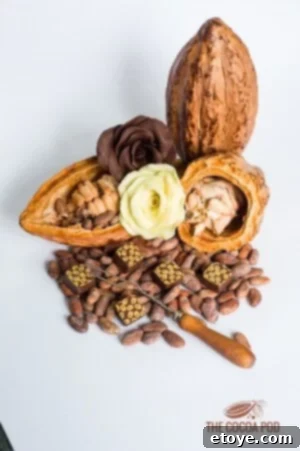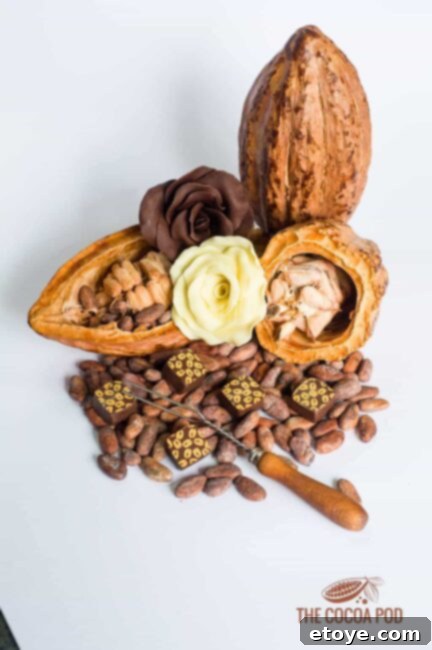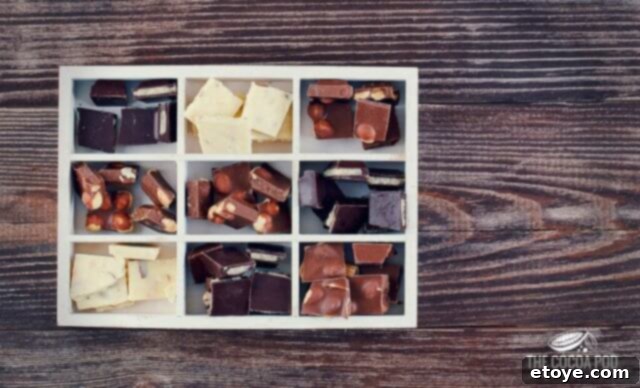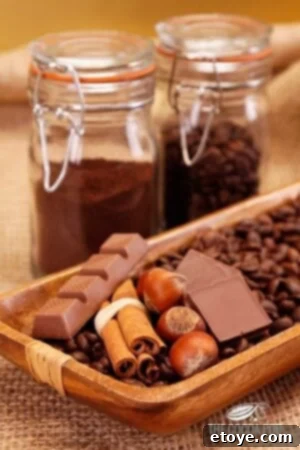 Embark on a delightful journey into the world of fine chocolate with our friends at The Cocoa Pod! They are generously offering a $75 gift certificate to their shop, where you can explore exquisite raw cocoa beans and beautifully decorative cocoa pods. For those passionate about the purest form of chocolate, The Cocoa Pod is a treasure trove.
Embark on a delightful journey into the world of fine chocolate with our friends at The Cocoa Pod! They are generously offering a $75 gift certificate to their shop, where you can explore exquisite raw cocoa beans and beautifully decorative cocoa pods. For those passionate about the purest form of chocolate, The Cocoa Pod is a treasure trove.
We recently indulged in roasting a fresh batch of cocoa beans in our toaster oven, thoroughly enjoying the crunchy, rich nibs as an addition to our trail mix. While the health benefits of dark chocolate are widely recognized, cocoa nibs take it a step further, boasting even higher levels of antioxidants. They’re a fantastic way to enjoy the essence of chocolate in its most unadulterated form, packed with nutrients and intense flavor.
We invite you to explore the enticing selection at The Cocoa Pod and prepare yourself for an extraordinary culinary adventure. If the idea of hosting your own chocolate tasting party excites you, then read on! We’ll guide you through every step to create an unforgettable experience. Don’t forget, the exciting $75 giveaway details await you at the end of this comprehensive guide. ~Jaden
Mastering the Art of Hosting an Exceptional Chocolate Tasting Party
By Jeffrey Stern, The Cocoa Pod Shop
Imagine gathering your closest friends, family, or even colleagues for an event that stimulates all the senses and deepens appreciation for one of the world’s most beloved treats. A chocolate tasting party is far more than just eating chocolate; it’s a full sensory exploration, engaging sight, smell, touch, sound, and, of course, taste. Hosting such an event in the comfort of your home or office offers a unique and fun way to spend an afternoon or evening. This guide will equip you with all the knowledge and tips you need to orchestrate a memorable chocolate tasting, allowing you and your guests to enjoy gourmet chocolate while discovering its intricate nuances and fascinating origins.
Curating Your Collection: The First Step to a Great Chocolate Tasting
Before you can host an unforgettable chocolate tasting party, you need to acquire the stars of the show: the chocolates themselves! But how do you choose from the vast array available, and how should they be organized for an optimal tasting experience? We’re here to demystify the process and help you select a truly impressive collection.
The foundation of an excellent tasting is a diverse range of chocolates, ideally starting with a lower percentage and gradually increasing to a higher one. You’ll often see chocolates labeled with percentages such as 55%, 60%, 70%, and even higher, reaching into the 80s or 90s. This percentage indicates the combined amount of cocoa solids and cocoa butter present in the chocolate. For instance, a 70% chocolate contains 30% sugar, a 65% chocolate has 35% sugar, and a 50% chocolate is composed of half cocoa and half sugar. This ratio significantly impacts the flavor profile, bitterness, and texture of the chocolate, making a percentage progression crucial for your guests to experience the full spectrum of cocoa expression.
For the best quality and most interesting flavors, we highly recommend looking beyond conventional supermarket brands. Start your search online, where a plethora of artisan chocolate makers showcase their craft, or visit a specialized gourmet market or confectionery store in your area. Brands renowned for their exceptional quality and bean-to-bar philosophy include Dandelion, Ritual, Fruition, and Dick Taylor, among many others. These artisan chocolatiers focus on sustainable sourcing, meticulous processing, and highlighting the unique characteristics of different cocoa beans, resulting in complex and nuanced flavors. Steer clear of mass-market products for this tasting; their often-homogenized flavors won’t provide the depth and variety you’re aiming for.
 Selecting Premium Chocolates: A Guide to Ingredients
Selecting Premium Chocolates: A Guide to Ingredients
When curating your chocolate selection, paying close attention to the ingredient list is paramount. For a true appreciation of chocolate, ensure that your chosen bars contain only real cocoa butter and are free from any added fats or vegetable oils. The ideal ingredient list should be short and pure: cocoa mass or cocoa liquor (which is not an alcoholic beverage but an industry term for ground cocoa beans), cocoa butter, sugar, lecithin (an emulsifier often derived from soy), and perhaps a touch of natural vanilla. Avoid chocolates that list “vanillin” or any artificial vanilla flavorings at all costs; these synthetic additives can mask the subtle, authentic flavors of the cocoa bean.
Furthermore, for a fundamental tasting experience focused on the inherent qualities of the cocoa, opt for pure chocolate bars without any added flavors, nuts, fruits, or other inclusions. This “naked” approach allows you and your guests to truly discover the astonishing range of natural flavors inherent in the cocoa beans themselves, unadulterated by other ingredients. You’ll be surprised at the diverse notes that can emerge from a single origin bean, ranging from fruity and floral to earthy and nutty.
While often a crowd-pleaser, milk chocolate typically contains 35% cocoa or less, meaning it can be comprised of 65% or more sugar. Due to its significantly higher sugar content and the addition of milk solids, milk chocolate often obscures the nuanced flavors that high-quality dark chocolate can offer. You might even notice that many milk chocolate bars don’t bother listing their cocoa percentage because it’s generally low. However, including one bar of milk chocolate in your tasting can serve as an excellent reference point, providing a familiar starting taste and highlighting the dramatic difference as you progress to darker, more complex chocolates.
Organizing Your Tasting Event: Setting the Stage for Discovery
Once you’ve carefully selected your premium chocolate bars, the next step is to organize your tasting in a way that maximizes the sensory experience for your guests. Proper preparation ensures a smooth flow and allows everyone to fully immerse themselves in the world of chocolate.
Begin by arranging your chocolates in a logical order. The general recommendation is to start with the milk chocolate (if included), then progress through the dark chocolates from the lowest cocoa percentage to the highest. This gradual increase in cocoa content allows the palate to adjust and appreciate the evolving flavors and intensities. To prevent palate fatigue, which can diminish the ability to distinguish subtle notes, we suggest limiting your tasting to a maximum of 5 to 7 different chocolates. This number provides enough variety without overwhelming the senses.
To add an element of fun and challenge, consider conducting a blind tasting. This involves concealing the brand and cocoa percentage of each chocolate until after everyone has tasted and formed their opinions. It encourages participants to focus solely on the chocolate’s characteristics rather than preconceived notions about brands, making for lively discussion and intriguing guesses at the end of the session.
Essential Setup for Your Chocolate Tasting
- Plates and Labels: Prepare a separate small plate for each chocolate bar you’ll be tasting. If opting for a blind tasting, discreetly label the underside of each plate with a piece of tape indicating the chocolate’s brand and percentage. This allows you to reveal the identities later.
- Palate Cleansers: Provide small cups of room-temperature water and a tray of unsalted crackers or plain bread for each participant. These are crucial for cleansing the palate between each chocolate, preventing residual flavors from interfering with the next sample.
- Serving Size: Break each chocolate bar into small, manageable pieces – roughly the size of a quarter or even slightly smaller. This ensures guests can fully experience the chocolate’s melt and flavor without feeling overwhelmed.
- Tasting Sheets: Consider providing simple tasting sheets or scorecards for your guests. These can include sections for visual observations, aroma, texture, flavor notes, and overall impression for each chocolate. This encourages thoughtful engagement and provides a fun keepsake.
The Sensory Journey: A Step-by-Step Guide to Tasting Chocolate
A true chocolate tasting is a multi-sensory experience. To fully appreciate each piece, follow these guidelines, engaging all your senses before the chocolate even touches your tongue:
1. Visual Appeal (Sight)
Before breaking or tasting, observe the chocolate. A high-quality, properly tempered chocolate should exhibit a beautiful, glossy sheen, ranging from deep brown to mahogany. It should be free of any blemishes, streaks, or a dull, matte appearance, which often indicates “bloom” (a visual defect that can occur from temperature fluctuations) or improper tempering. The uniform color and smooth surface are the first indicators of craftsmanship.
2. Audible Delight (Sound)
Carefully break a small piece of the chocolate. A well-tempered dark chocolate, made with real cocoa butter, should produce a distinct, crisp snap. This satisfying sound is a hallmark of quality and proper crystalline structure, signaling that the chocolate has been expertly handled. If the chocolate is soft or bends easily, it suggests an issue with tempering or the presence of inferior fats.
3. Aromatic Immersion (Smell)
Bring the chocolate close to your nose and inhale deeply. A good chocolate should emit a clean, rich aroma of chocolate and cocoa, possibly with hints of other complex notes like fruit, spice, or nuttiness. There should be no “off-smells,” such as rancid, stale, or chemical odors, which can indicate poor quality ingredients or improper storage.
4. Tactile Sensation (Touch)
Rub a small piece of chocolate between your thumb and forefinger, or hold it briefly in the palm of your hand. High-quality chocolate made with real cocoa butter will slowly begin to melt from your body heat, leaving a clean, smooth, and luxurious feeling on your skin. If it feels waxy, greasy, or resists melting, it likely contains vegetable fats other than cocoa butter.
The Grand Finale: Eating and Indulging Mindfully
Now for the most anticipated part: the taste! Place a small piece of chocolate in your mouth and resist the urge to chew immediately, however tempting it may be. Allow the chocolate to rest on your tongue and slowly melt. This initial melt releases the most volatile aromatic compounds, offering the first wave of flavors.
As it begins to melt, consciously try to identify any distinct flavors that emerge. Once the chocolate has softened and started to liquefy, gently move your tongue around your mouth to spread the melted chocolate, coating your palate. This action allows the flavors to fully develop and interact with your taste buds. You might discover an astonishing array of flavor notes, including bright citrus, roasted nuts, dark or red berries (like raspberry or cherry), dried fruits such as raisin or plum, earthy undertones, floral notes, or even hints of coffee or caramel. Don’t be shy; write down whatever immediately comes to mind, no matter how unusual it seems. There is no right or wrong answer when describing personal taste experiences!
Finally, once the chocolate has completely melted and you’ve swallowed it, pause and pay attention to the lingering aftertaste. How would you describe it? Is it pleasant or unpleasant? Does it fade quickly, or does it have a long, satisfying finish? The aftertaste is a crucial component of a chocolate’s complexity and quality. Reflect on these notes; your personal description is what matters most.
Hosting a chocolate tasting party is a wonderfully immersive way to deepen your appreciation for chocolate, explore the incredible diversity of flavors available in different bean-to-bar creations, and, most importantly, share a fantastic, educational, and delicious time with friends and family. It transforms a simple treat into a sophisticated culinary event, leaving everyone with a newfound respect for this ancient delight.
Exclusive $75 Gift Certificate Giveaway from The Cocoa Pod!
As a special thank you for embarking on this chocolate journey with us, The Cocoa Pod is giving away a $75 gift certificate to one lucky winner! Imagine selecting your own raw cocoa beans, gourmet nibs, or decorative pods to start your own chocolate-making or tasting adventure. Details on how to enter will be provided soon on our blog and social media channels. Don’t miss this incredible opportunity to explore the pure essence of cocoa!


 Selecting Premium Chocolates: A Guide to Ingredients
Selecting Premium Chocolates: A Guide to Ingredients